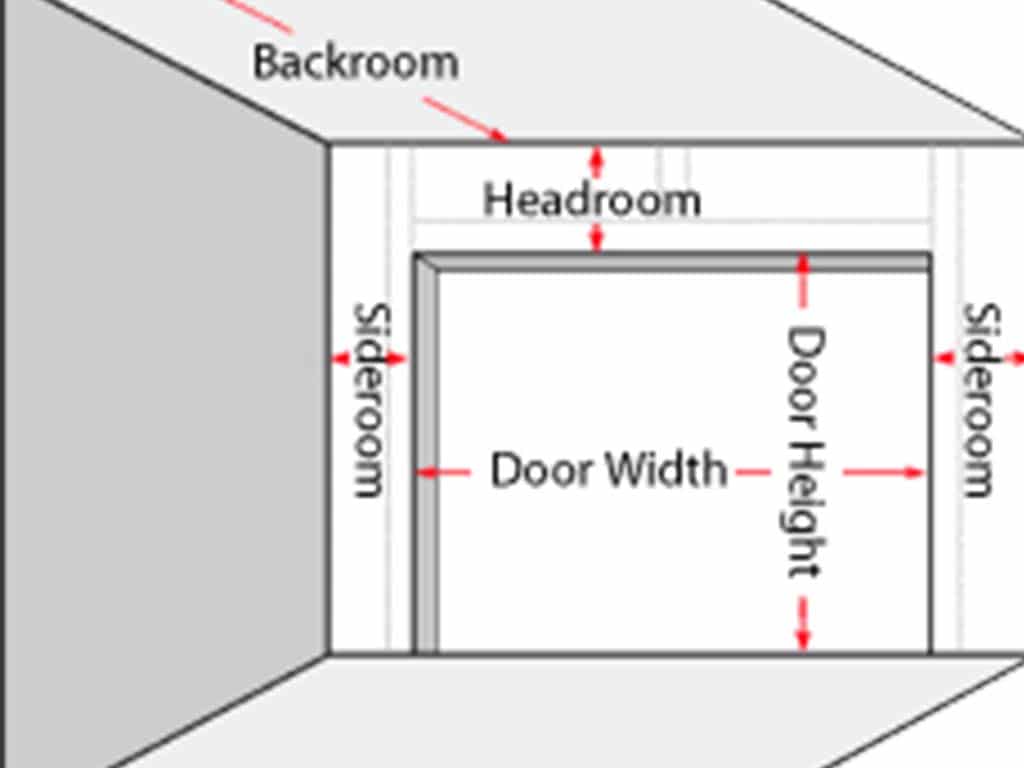Wondering how to accurately measure your garage door size? Look no further. In this discussion, we will delve into the intricacies of measuring your garage door size, providing you with all the necessary information to ensure a perfect fit for your replacement door. From measuring the width and height of the door opening to considering track radius requirements for headroom, we will cover all the essential steps. So, if you’re ready to finally say goodbye to ill-fitting garage doors, keep reading to discover the secrets of accurate measurements.
Measuring the Opening
To accurately measure the opening for a garage door, follow these precise steps. Start by using proper measuring techniques to ensure accurate measurements. Common measurement mistakes can lead to installation issues and improper fit. It is crucial to emphasize the importance of precise measurements when ordering a garage door. Utilize tools such as a measuring tape or laser level to ensure accuracy.
When measuring for custom garage doors, take into account any irregularities such as non-square jambs or an un-level floor. Measure the width at the widest point of the opening and the height at the highest point. For a 2-door installation, the center post should be at least 10 inches wide. Allow up to 5 inches on each side for vertical track installation. Consider the distance between the top of the door opening and the ceiling, and check for any obstructions or track radius requirements for headroom.
Additional tips for accurate measurements include checking for electrical outlet availability for door opener use, noting any lights, stairs, or swing doors that may impede the track, verifying the condition of wood jambs and stability of the header, checking the levelness of the floor, and noting any pipes, ductwork, or obstructions above the door.
Measuring the Areas Beside the Openings
You can determine the width of the areas beside the garage door openings by allowing up to 5 inches on each side for vertical track installation. This measurement is necessary to ensure proper track installation and prevent any interference. Additionally, if you are installing a two-door system, the center post width should be at least 10 inches wide to provide stability and support.
When measuring for track installation, it is important to consider any obstructions in the garage that may affect the width of the areas beside the openings. Look out for things like electrical outlets, lights, stairs, or swing doors that may impede the track. It is also important to verify the condition of the wood jambs and the stability of the header to ensure a secure installation.
Furthermore, it is essential to consider track radius requirements when measuring the areas beside the openings. Different track systems have specific radius requirements for proper operation. Ensure that you have enough space to accommodate the required track radius.
Lastly, when ordering your garage door, it is crucial to reference the correct size based on the manufacturer’s ordering size references. Take accurate measurements of the width and height of the openings, excluding the frame and door, to determine the appropriate size. Taking into account these factors will help you order the right size garage door for your needs.
Measuring the Distance to the Ceiling
Continuing our exploration of garage door measurements, we now turn our attention to measuring the distance to the ceiling. When measuring the area between the top of the door opening and the ceiling, several factors need to be considered to ensure proper installation. These factors include calculating headroom, considering obstructions, determining track radius, checking for electrical outlets, and examining wood jambs.
To help you better understand these measurements, let’s break them down in a table format:
| Measurement | Description |
|---|---|
| Calculating headroom | Measure the distance between the top of the door opening and the ceiling. This measurement is essential in determining the type of hardware and springs needed for proper operation. |
| Considering obstructions | Take note of any objects or obstacles that may impede the track or interfere with the garage door’s movement. It is crucial to have sufficient clearance for smooth operation. |
| Determining track radius | The track radius is determined by the type of door and hardware being installed. Different track radius requirements exist for different types of garage doors. It is important to follow the manufacturer’s specifications for proper installation. |
| Checking for electrical outlets | If you plan to install an electric garage door opener, ensure that there are electrical outlets available near the door opening. This will help facilitate the installation process. |
| Examining wood jambs | Inspect the condition of the wood jambs surrounding the door opening. Ensure that they are stable and in good condition to provide proper support for the door and hardware. |
Measuring the Distance to the Rear of the Garage
When measuring the distance to the rear of the garage, it is important to consider the specific requirements for different types of garage doors, as well as any potential obstructions or obstacles that may affect the installation process. Ensuring accurate measurements is crucial for determining the required space and measuring for proper clearance. Here are the key steps to follow when measuring the distance to the rear of the garage:
- Measure the height of the garage door and add 18 inches for manual lift doors or 42 inches for electric opener installation. This will provide the necessary space for the door to fully open and close.
- Consider any obstructions or nearby obstacles that may interfere with the door’s movement. This could include pipes, ductwork, or other structures that may limit the available space.
- Assess the condition of the rear wall and any potential obstructions that may affect the installation process. This will help ensure that the door can be properly installed without any hindrances.
Additional Tips for Accurate Measurements
As you continue to ensure accurate measurements for your garage door installation, there are a few additional tips to keep in mind. When it comes to measuring techniques, it is important to account for potential obstacles that may affect the installation process. Take note of any electrical considerations, such as the availability of electrical outlets for door opener use. Additionally, verify the structural stability of the wood jambs and the header to ensure a secure installation. It is also essential to check the levelness of the floor to avoid any issues during installation. Lastly, be aware of any pipes, ductwork, or other obstructions above the door that could interfere with the track.
Another important factor to consider is the track radius requirements for proper functioning. Different track systems have specific headroom requirements, ranging from low headroom to high lift tracks. It is crucial to adhere to these requirements to ensure smooth operation and prevent any track-related issues. By following these additional tips and considering all the necessary factors, you can ensure accurate measurements and a successful garage door installation.





